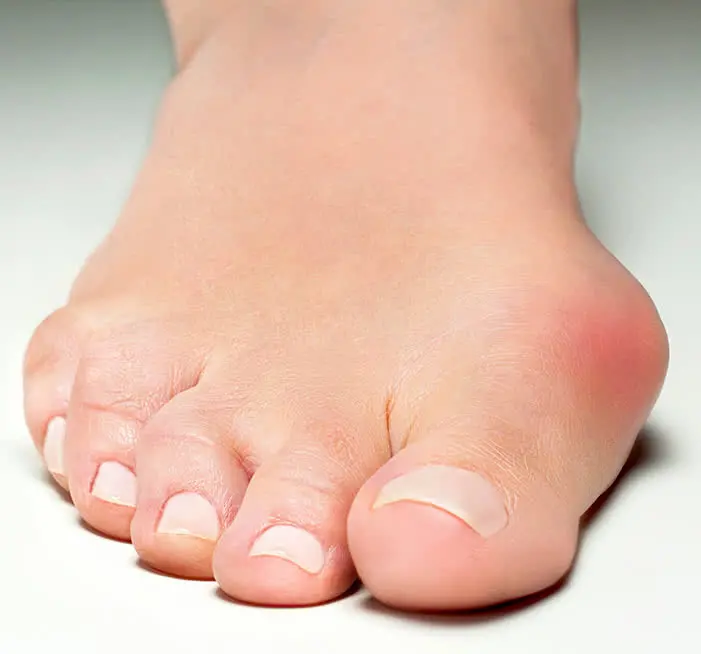Hallux Valgus: causes, solutions, and benefits of the AtlantoMed treatment

People who return to our Centers for the second session, after 5-8 weeks, report noticing changes in various areas of their bodies. Among these, the issue of hallux valgus is occasionally mentioned.
Some, with disbelief, state that the pain, which had progressively worsened over the years, now seems to be decreasing, giving the impression that the hallux is gradually returning to a straighter position.
Initially, we thought it was just a coincidence or a suggestion, fueled by the enthusiasm for the general benefits experienced. Therefore, we did not pay much attention to these testimonials.
However, as similar cases increased, we began to question whether the improvement in hallux valgus could actually be connected to the correction of the Atlas and the resulting postural improvement.
We then decided to systematically record cases of hallux valgus. This task was facilitated by the fact that, during postural photos on the SpineLine rotating platform, observing the subjects' feet is inevitable. We started asking during the second session whether they had noticed any changes. The most common response was: "now that you mention it... in fact, I no longer feel any pain, but I hadn't realized it".
It is known that the onset of pain is immediately perceived, while the moment pain disappears often goes unnoticed. Only by recalling their previous condition do people become aware of the improvement. This phenomenon becomes evident when, during the second session, patients complete the AtlantoMed questionnaire again. By reviewing the answers given before the treatment, they notice improvements they had forgotten.
The mind has a natural tendency to avoid pain, which is why, once the problem is resolved, we tend to forget it quickly. Similarly, people who have overcome their ailments thanks to AtlantoMed seem to quickly forget, along with the pain, those who helped them. If you do not promote the method yourself by sharing the success achieved where previous treatments had failed, who will? Certainly not the doctor who sees AtlantoMed as an annoying threat to their status quo. In fact, our results highlight the limitations of traditional treatments, causing embarrassment to those who claimed these conditions were incurable. For those who follow the logic that "a cured patient is a lost patient," an effective method like AtlantoMed represents nothing but a loss, both in terms of prestige and economic opportunities.

BEFORE
AFTER
The people who never seem to forget us, even after years, are unfortunately those who did not benefit from the treatment. These individuals never miss a chance to point out the failure. Such an attitude shows that they did not understand the body’s mechanisms or the purpose of the treatment. AtlantoMed aims to correct the position of the Atlas vertebra, not to "cure" specific disorders, as is clearly explained on the page Who is AtlantoMed treatment for?. I wonder if these individuals also complain to their doctor every time prescribed medications fail to solve the problem, which happens in most cases, often causing side effects. But that, as they say, is another story.
Let’s return to the hallux valgus. Our observations have allowed us to identify a common denominator among people with hallux valgus: a forward-leaning posture. When photographed from the side, it becomes evident that their center of gravity is always projected forward!
This causes the weight, instead of being distributed on the heel, to concentrate on the forefoot. Over time, this chronic overload on the forefoot can promote the development of the hallux valgus, deforming the joint to adapt to an unnatural load. The joint, in its attempt to compensate for the excessive load, thickens and often deforms, leading to several negative consequences for the foot's functionality.
Support for our observations came from an Italian scientific study in which 120 people with hallux valgus were analyzed using a stabilometric scale (see below). The results showed greater pressure on the medial sides and forefoot, both in static and dynamic conditions, compared to individuals without this condition.
After the correction of the Atlas with the AtlantoMed method, a general improvement in posture is frequently observed. In the specific case of the hallux valgus, individuals appear more upright statically, while from a lateral perspective, the center of gravity tends to shift backward. This new weight distribution alleviates the overload on the forefoot, promoting improvement in the hallux valgus. This can interrupt the painful and often inevitable process leading to surgery, promoting a more natural and less invasive recovery.
We would like to emphasize that Atlas misalignment is not the only possible cause of incorrect posture and the subsequent development of a hallux valgus. The postural imbalance described above can also result from a cranio-mandibular dysfunction or from wide or flat feet. The issue of hallux valgus is often the result of multiple contributing factors. However, in many cases, Atlas dysfunction has proven to be the determining factor.
What is hallux valgus or the oblique deviation of the big toe?
Hallux valgus is the most common foot deformity and affects women about 9 times more frequently than men. This condition involves a misalignment of the big toe, causing progressive deformation and possible thickening of the metatarsophalangeal joint. In some cases, it may also lead to claw-like toe formation.
Typically, hallux valgus manifests in old age, but recent studies indicate that early signs can be detected in predisposed individuals as early as 14 years old. This highlights the long development period required for a postural imbalance to produce visible damage.
In its initial stage, hallux valgus is primarily an aesthetic issue. However, if the causes are not addressed, the condition tends to worsen. Over time, it can develop into hallux rigidus, resulting in osteoarthritis of the metatarsophalangeal joint.
Hallux valgus in an advanced stage of deformation often requires surgical correction, with all the consequences and risks that surgery entails, and recovery times that can last for months. Do you really want to wait until surgery becomes inevitable? Wouldn't it be more sensible to act preventively by addressing posture and correcting the Atlas, or possibly the jaw, from an early age?
Consequences of hallux valgus:
- Pain in the metatarsophalangeal joint when rolling the foot and when wearing tight shoes.
- Skin irritation accompanied by inflammation of the underlying membrane, with a risk of bacterial infections in areas where the skin is damaged or open.
- The progressive deviation of the big toe can cause the deformation of adjacent toes, particularly the second and third, compromising their alignment and functionality.
- Alterations in gait due to postural compensation to alleviate pain, which can lead to overloading other muscle chains and the joints of the spine, causing further dysfunctions and pain.
Video interviews with hallux valgus
stories after Atlas realignment
What People Say About Us
Beware of those who disguise a simple cervical manipulation as Atlas realignment and those who offer low-quality imitations of our method. The results speak for themselves: over 10,000 testimonials and reviews in various languages make us unique. Click to discover opinions, ratings, and authentic experiences shared by those who have experienced Atlas correction with Vibro-Resonance AtlantoMed:




